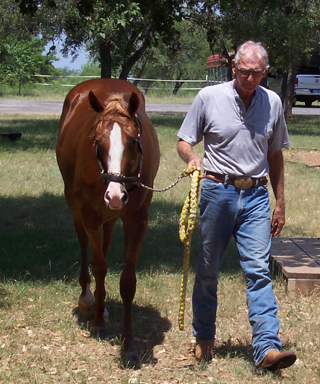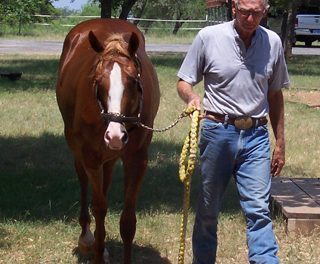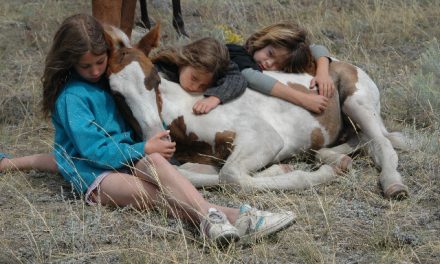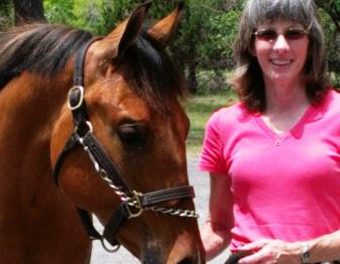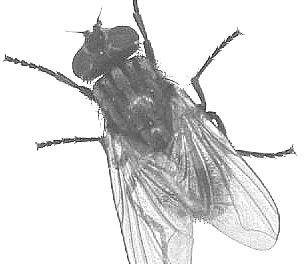A Horse, Of Course
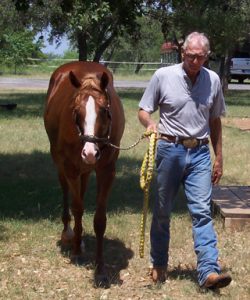
Don with Sox
Walter is a brave little pony.
But then, the “brave” is a special story, the “little” is a special story, and the “pony” is a special story. If I’m going to tell one, I might as well all three.
Walter was brave going in for colic surgery.
Well, wait a minute; I’m getting ahead of myself…let’s start at the beginning.
I was in need of a pony horse to use at the race track. (Pony horses usually have a little age on them, are stout, with mild dispositions, rugged bone and plenty of stamina.)
A pony horse is the first to be saddled in the dark of the early morning. He waits patiently while runners are groomed and saddled, and the exercise riders arrive. The pony escorts (ponies) the highly-energized race horses, one by one, as they go to the track. The pony may be required to trot with the runner and take him to the starting gate, or he may be required to gallop along with a green, young horse. He may be asked to “break-off”—start running with a horse which is working for an official time. It is expected the pony will suffer a bite or two along the way, and he must be quick to avoid kicks from the stars of the show. While the runners are only out for a mile or two of galloping, then a bath and some walking to cool out, the pony works the entire morning. (He may go 10 miles, and work four to five hours.)
My daughter, Cathy, trains show horses, (Hanson Quarter Horses) so I called her to ask if she had a suitable horse I could purchase to use as a pony. I knew she wouldn’t send me a young, green, inexperienced midget.
“I’ve got just the horse for you, Dad,” she answered, “and he won’t cost you a dime. He’s real cute and gentle, and I’ll have him sent over right away.”
That was easy. He’s cute? I need a cute pony? He won’t cost me a dime? Free horses are the most expensive kind. He’s coming over right away? She’s that anxious to get rid of him?
When the van pulled in, I thought it was a mistake. I couldn’t see a big, stout, strong pony horse. I couldn’t see any horse.
When Walter stepped off the van, I still couldn’t see a horse.
He was young. He was only two. He was inexperienced. He had been ridden only 20 times. And, he was a midget – not two hairs taller than 13.3 hands.
Cathy explained later that Walter had a less than robust beginning. “He was always kind of puny,” she said. “But he’s always been cute.”
Walter is cute. He’s black with a tiny star, a faint strip and socks on both hind feet.
In the first six months I had Walter, he grew three inches, making him a pony-sized pony.
Well, that’s the “little” story.
Walter became a working pony. He didn’t have much choice. I needed a pony, desperately.
Off to the race track we went. Walter go his schooling around the barns and at the end of the race track chute. He didn’t get much time to learn. On his first day of work he was kind of shy about leading a nearly 16.2 hand two-year-old to the track. But he did it.
On the second day of work, Walter had to go to the starting gate. He didn’t like it, but he did it.
On the third day, he had to gallop a little more than two miles leading a silly filly. Then he had to gallop another two miles with an older gelding. And, finally, he had to stand quietly for 20 minutes on the track while runners raced by.
By the fourth day, he was the darling of the track. All the female exercise riders and jockeys were stopping by to say hello. (At first I thought they were coming to see me—but once they gave Walter a pat on the nose, they were off.)
During the second week, Walter wanted to change his profession. It was obvious to him the race horses were doing less work and getting more to eat. Three times he attempted to show me how fast he was by breaking and running half-way around the first turn and down the stretch.
We discussed the matter thoroughly, and by the third week, Walter was a full-time, true-blue pony horse.
And that’s the “pony” story.
After the racing season, Walter came back to the farm, bigger, stronger and full of pep. Summer vacation was obviously his favorite thing.
Turned out in s large paddock to play, Walter romped, stomped, bucked, twisted and fishtailed. In doing so, he apparently flipped part of his intestine up and over an internal ligament. (Sort of like hanging a twisted wet sheet over a clothes line.)
Colic was the result. So Walter was off to the equine hospital where his predicament was the subject of options. Avoiding surgery and “rolling” him seemed the safest and most cost-efficient solution.
Walter was “rolled”. His hanging intestine did not fall free.
Surgery!
Walter was in a lot of pain. But he hadn’t complained much, so his bravery as he marched into surgery wasn’t too surprising.
The operation was a success. The cost we are not discussing. Remember, I said free horses are always expensive.
Walter had been brave, even if a little obnoxious, during recovery. If a hospital technician wasn’t standing by most of the time to pat and rub Walter’s head, then pawing—alternating front feet—started almost immediately. This scared the hospital attendants, causing them to rush about madly to make sure Walter wasn’t experiencing complications. Once his head was rubbed and he got his expected pats, the pawing subsided.
And that’s the brave part of his story.
His many friends knew not to send cards or flowers. Walter preferred carrots and English mints.
What a brave, little pony.
* Earn an equine degree or professional certification – all courses online. Please visit: www.horsecoursesonline.com

